Candy From Outer Space
Israeli-Canadian confectioner Maayan Zilberman makes art out of cane sugar and isomalt. Her crystal-inspired creations are now on display at a roving gallery in Los Angeles.
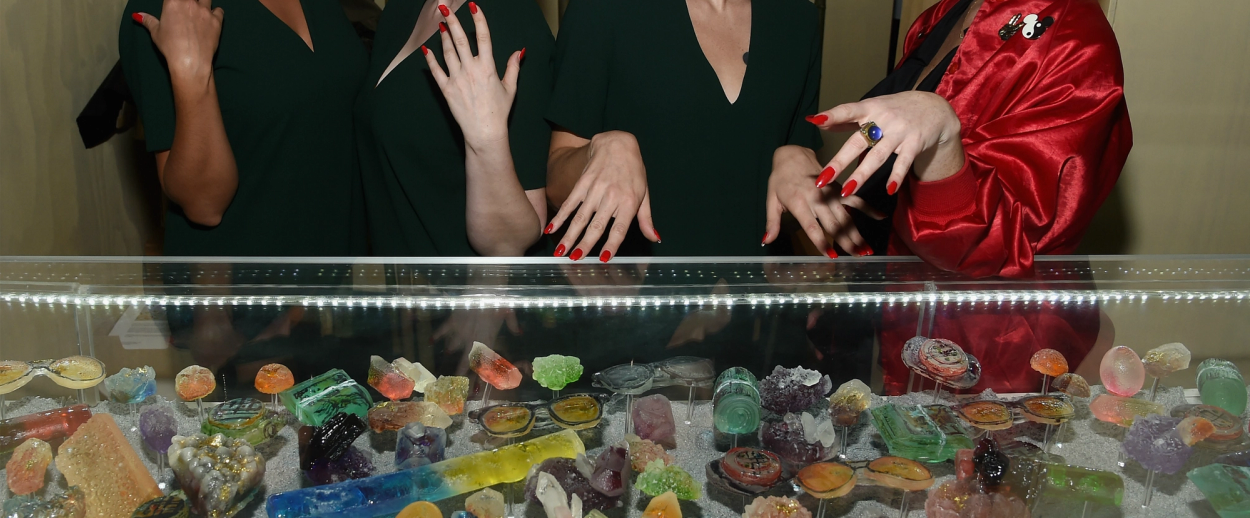
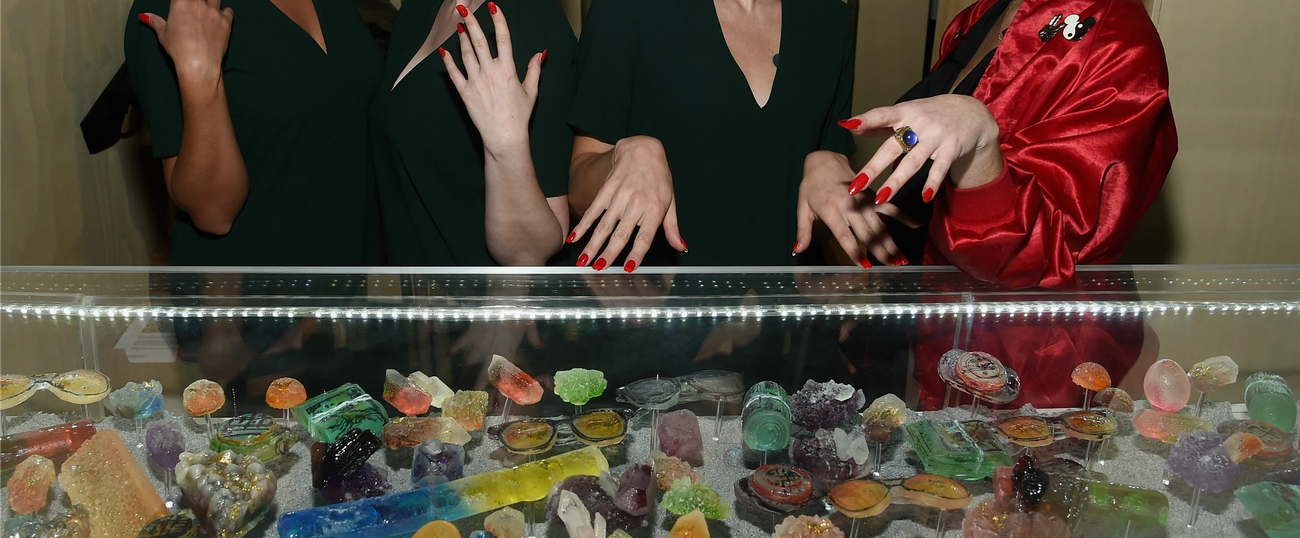


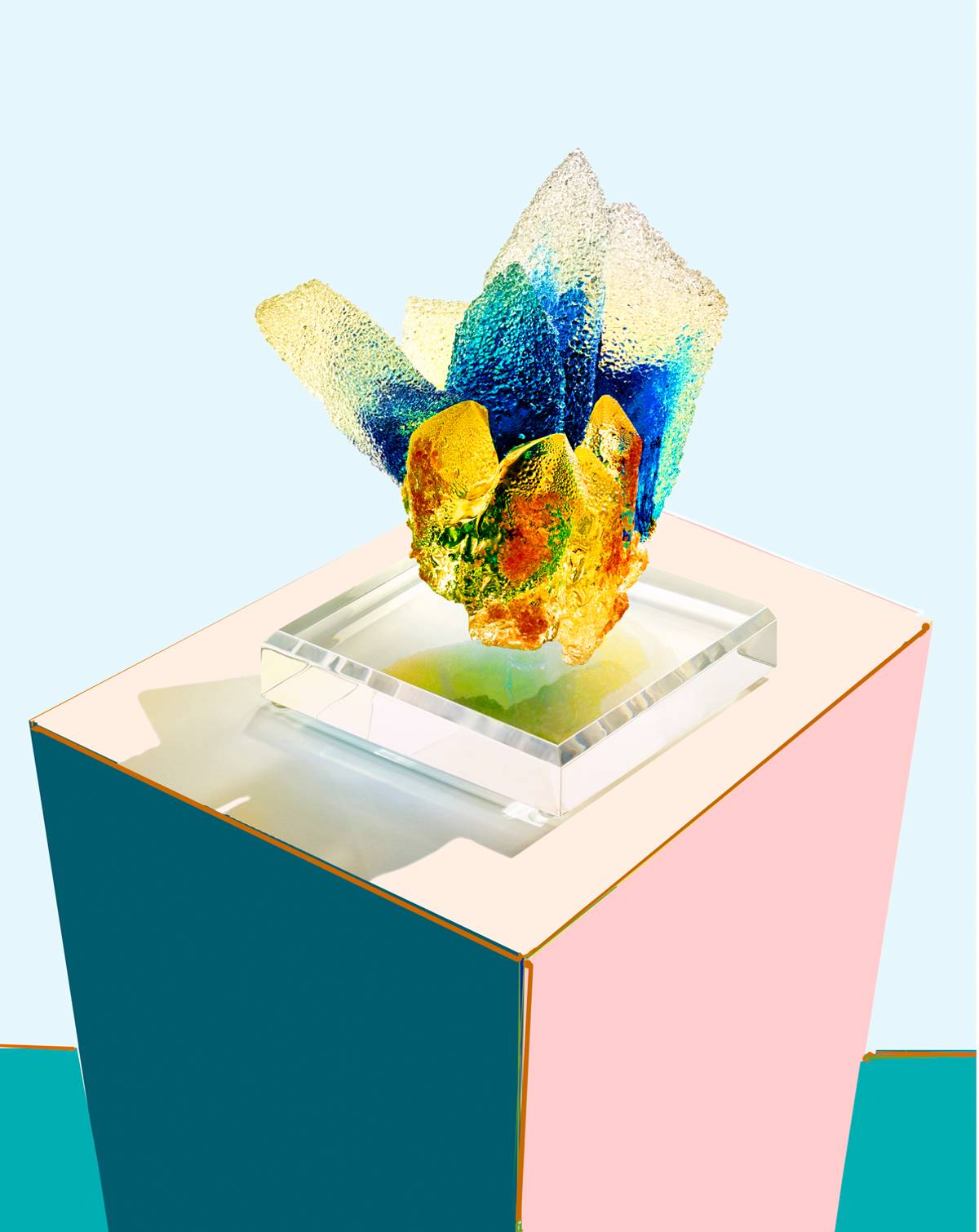
When Maayan Zilberman was growing up on a kibbutz in Israel, she fantasized about burying things in the ground and finding them petrified into candy. In a sense, the wish has come true. Now, the 37-year-old New York-based confectioner, artist, and creative director, turns sugar into sculpture. And profit.
Her latest art project, “SUGE,” was inspired by a visit to the Smithsonian, where rare gemstones like alexandrite and tanzanite were on display. “I started to feel like [the gems] were from outer space because they’re so fantastical and so beyond the realm of your imagination,” said Zilberman. The result—a series of sculptures that are made from cane sugar and isomalt, and shaped and colored like actual crystals (watermelon tourmaline, amethyst, topaz)—are on display at Furth Yashar & Gallery in Los Angeles.
In addition to her exhibit, Zilberman, through her high-end candy company, Sweet Saba, works with corporate clients and collaborates with fashion brands. She’s made Rolex watches that taste like champagne, and also eucalyptus, bacon, and whiskey. For the SUGE exhibit, Zilberman was drawn to the idea that sugar is a “dangerous material,” and represents a tension of the spirit: Crystals are collected for their purported healing qualities, while sugar is a public health enemy. “I know a lot of families who won’t even allow their children any sugar from the time they’re born, so it’s interesting to then make something that appeals to children that they’re not allowed to have,” she said.
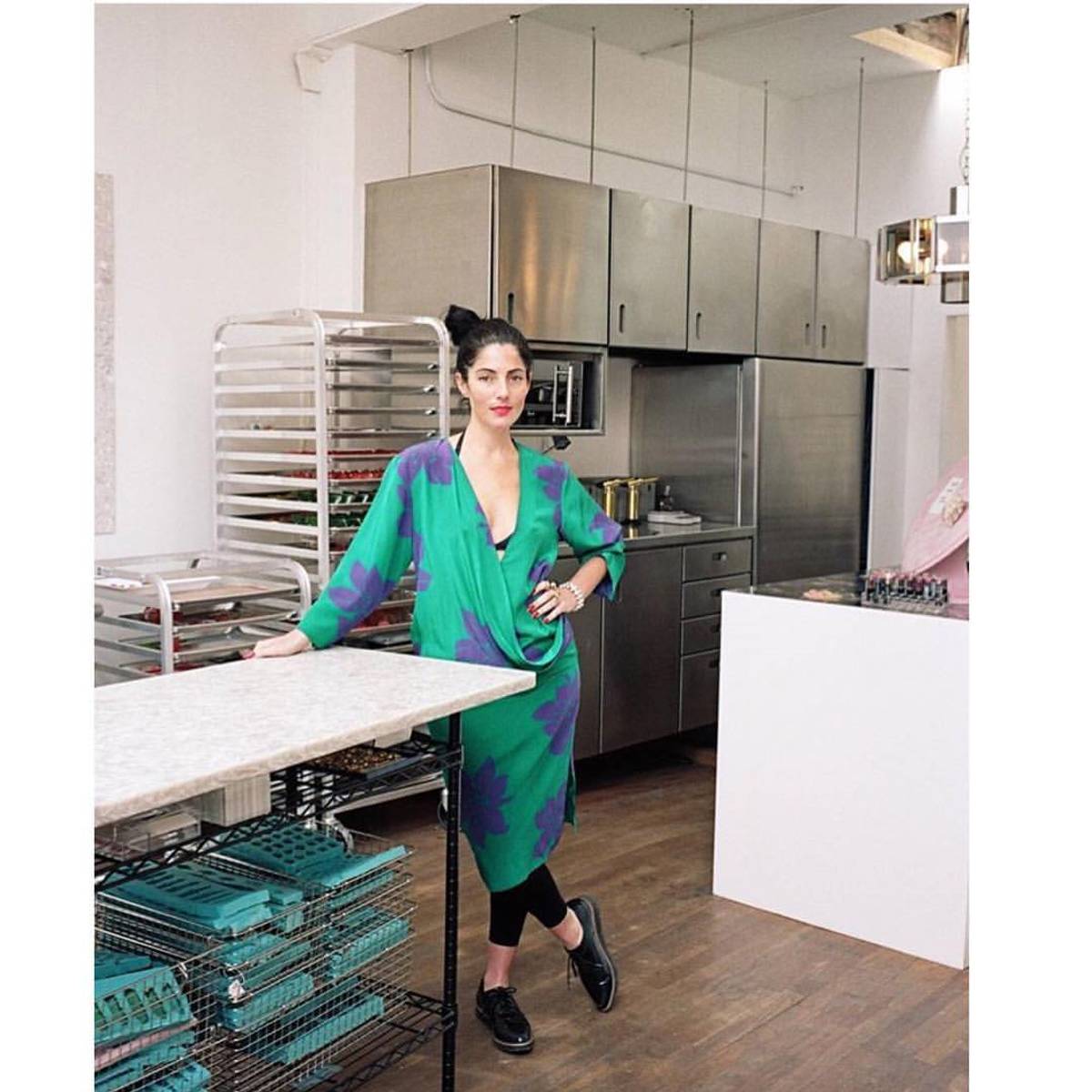
She colored the SUGE crystals with food-grade dyes and infused them with regional ingredients, she said, “as though they come from different mines from around the world.” Flavors include Icelandic sea salt, Rwandan ginger, Canadian scotch mint powder, and Mexican grasshoppers. The SUGE sculptures, like her Sweet Saba candies, are edible. But at $400-500 per piece, it’s unlikely people want to consume the art in that way.
Zilberman grew up in Jerusalem and Vancouver, Canada, where she attended a Jewish day school called Talmud Torah. While in Israel, she would bake cakes in her mother’s oven using a Hebrew cookbook called Birthday Cakes. She’d later graduate from the School of Visual Arts in New York City with a degree in sculpture. A decade ago she co-launched a lingerie line, The Lake & Stars, which eventually led to a two-year stint in Los Angeles as a creative director for Frederick’s of Hollywood. Upon returning to New York, she launched a bakery called WaveCake and made custom candies for baby showers, weddings, and bar mitzvahs in whimsical shapes: lipstick, flowers, wads of cash, pizza pies, cassette tapes, and sunglasses.
In her free time she baked cakes and made candy as a creative challenge and as a way to work with her hands. Eventually, this turned into an expertise, and she turned her focus away from lingerie and cakes, and onto candy. The Sweet Saba name is a tribute to her grandfather, a doctor, who passed away five years ago. “We used to make yogurt,” she said. “We’d make our own toppings that looked like they were from outer space. We made our own cereals and dried fruits. It let me be open to fantasy, which is what’s informed most of my career.”
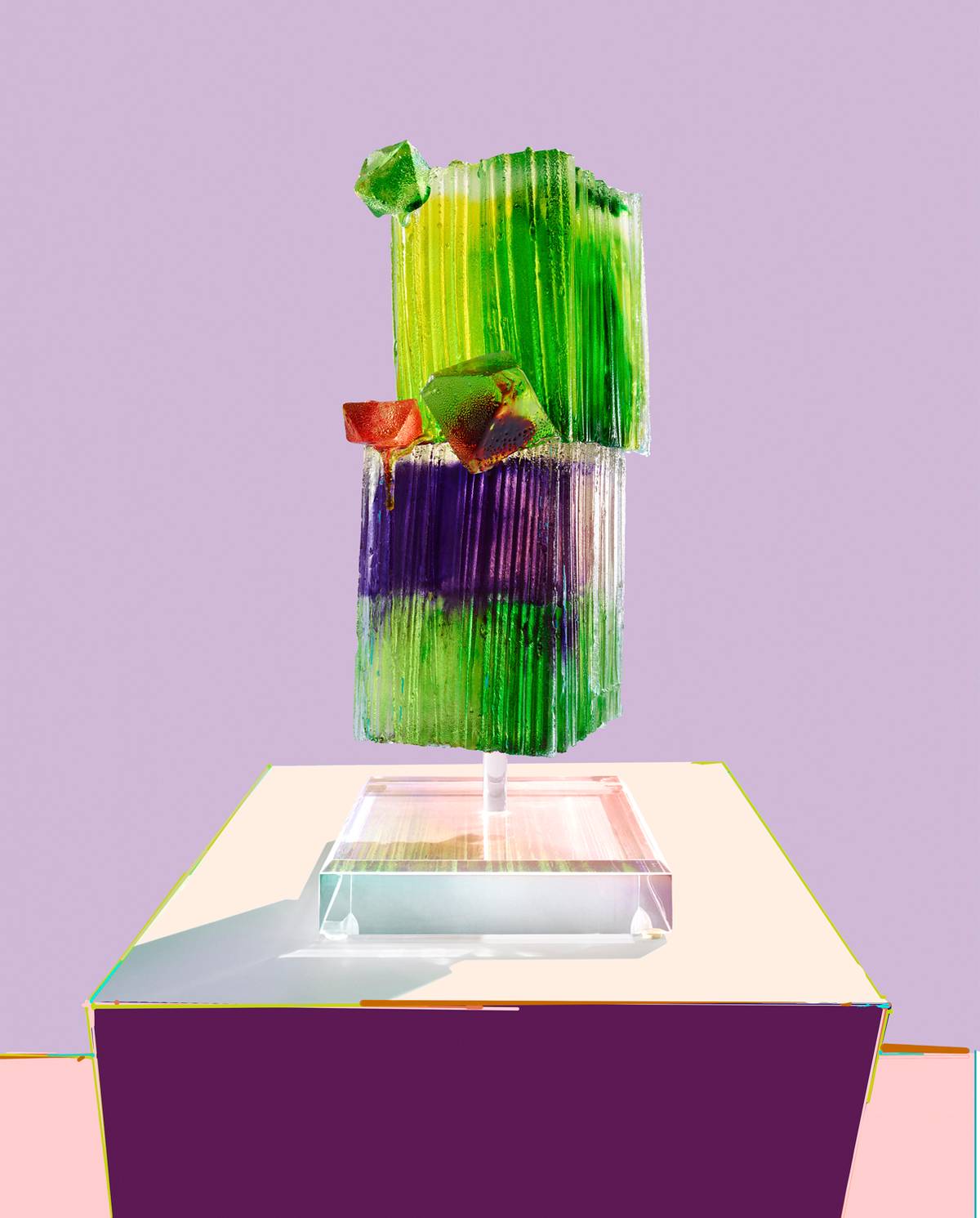
Zilberman is also looking to Israel for inspiration for future projects. She’s currently working on a sculpture using Dead Sea salt, and an ice cream project using dairy products from Israel.
The crystals at Furth Yashar &—a roving pop-up gallery currently parked at a design and furniture store in the affluent West L.A. neighborhood of Brentwood—are displayed at the sun-lit entrance to the store, with light pouring through the sculptures and bringing out their vivid colors. The gallery is run by a Jewish couple—Oliver Furth, a decorator, and Sean Yashar, a brand consultant—whose passion project challenges the brick-and-mortar concept of a gallery in a city so spread out and traffic-choked that traversing the city can be a major hassle. “Our west side friends don’t go east of the 405. And our east friends don’t really want to come into West Hollywood or Brentwood,” Yashar said. “We thought that maybe with this project, we could flip the script and come to them rather than have them come to us.”
The exhibit feels very much like it belongs in Los Angeles: the light, the hippie-dippie crystals, the allure of something beautiful that can’t be touched or consumed. But there’s also something absurd about admiring candy in the setting of an art gallery. It’s like putting Jolly Ranchers on a display pedestal. “For me, that’s the humor in it,” Zilberman said.
Avishay Artsy is a broadcast and print reporter in Los Angeles. He is the producer of KCRW’s Design and Architecture, a weekly radio show about the design and urbanism trends that shape our lives. He also writes for The Jewish Journal, The Forward, JTA and Jewniverse. He enjoys riding his bike, eating Korean BBQ, and hiking around L.A.